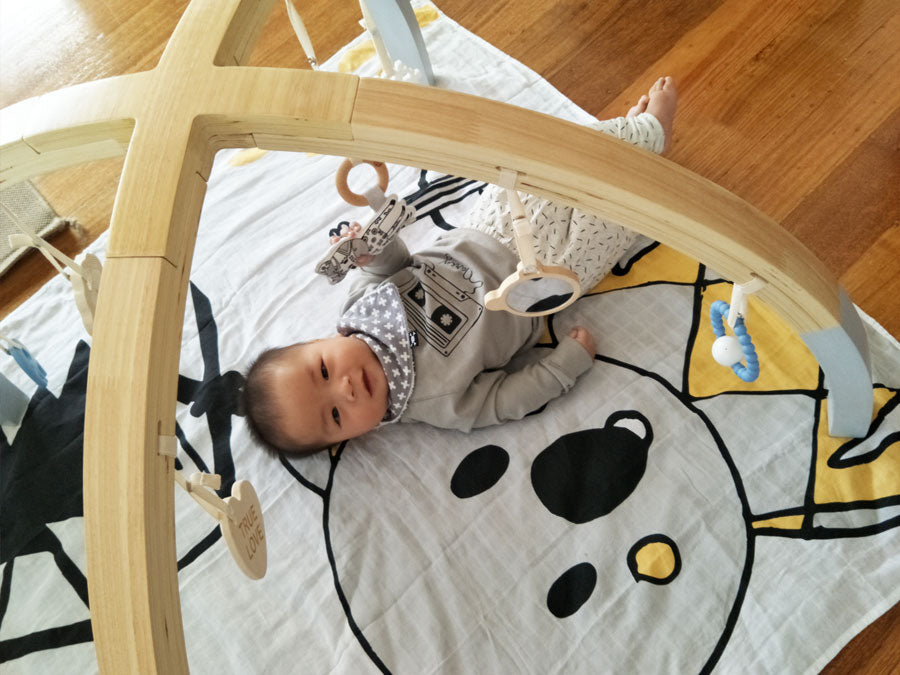Imaginative Play and How to Encourage It

Have you ever watched a child run away from an imaginary monster? Or rock a baby doll to sleep? The imaginations of children are powerful, and playing is about much more than fun and games. Imaginative play helps children in a variety of ways, from language development to motor skills.
What is Imaginative Play?
Imaginative play is when children use their imaginations to act out certain situations, role-play, or try something new. Any number of activities can be considered imaginative play, and there are a number of benefits that come when children engage with their imagination.
What are the Benefits?
There are a huge number of benefits that come with imaginative play, which is why it’s important to encourage it in the early years of childhood.
Decision-making

When engaging in imaginative play, children are constantly making decisions. As babies, they may not be conscious of these decisions, like whether to grab the baby rattle or roll over on their baby play mat. As they grow, they’ll make more complex choices, like what toppings should go on their pretend pizza and how to build the best castle with blocks.
These decisions might not seem important, but this process will help develop valuable decision-making skills for later in life.
Gross Motor Skills
Supporting the development of gross motor skills is essential in babies and young children. Imaginative play improves motor skills at any age. Babies can learn to mimic facial expressions and grip their toys, while older children crawl, draw, build, and run during their imaginative play.
Social skills
When we’re young, our social skills can be just as important as our intellectual ones. Imaginative play is great for developing your infant or child’s social skills from a very basic level to a complex one. Infants learn basic social skills through watching your actions. You might nod and smile, or shake your head and frown. These expressions help infants understand the world around them as they grow.
Older children learn more complex social skills from imaginative play. If they’re playing with other children, they’ll learn skills like negotiation and conflict resolution. These abilities will not only come in handy on the playground, but they’ll also be important later in life.
Encourages Imagination
As the name suggests, imaginative play is all about engaging the imagination. As children participate in imaginative play, they’re essentially exercising the creative parts of their brain. They’re encouraged to think in different ways, problem-solve, and create fantasy worlds of their own.
Babies’ brains are growing every day, so while infants might not seem like they’re using their imaginations, they’re still developing those same parts of the brain that older children use to imagine their surroundings. Infants might mimic your voice as you sing, point to pictures in storybooks, or put their toys in a pile. All of these small actions aid in the growth of creativity and imagination.
How Do I Encourage Imaginative Play?
Imaginative play offers tons of benefits, so you’ll want to encourage it for babies and children of all ages. There are a few simple steps you can take to make sure your little one is free to engage in imaginative play.
Set the Stage

The first thing you’ll want to do to encourage imaginative play is to provide a setting perfect for playtime. For infants, a baby play mat is the perfect spot. A baby play gym will allow babies to interact with toys, stimulate their senses with patterns and colours, and help develop their gross motor skills when you add rattles or soft blankets to the mix.
If your child is ready to move off the baby play mat to something a bit more mature, you can create a play corner (or even an entire play room). A play corner might include a small table for creative projects, shelves for toys, and imaginative settings like cardboard castles.
Participate
One of the best ways to encourage imaginative play is to take part in it. Children, especially infants, are constantly learning from what they see around them, and you can be sure they’re keeping a close eye on you.
For babies, participation might mean singing a lullaby, making silly faces, or reading a book with plenty of colourful pictures. You could even sit down next to your little one on their baby play gym and show them their reflection in a mirror. Even these small actions make a difference when your baby’s mind is growing every day.
For older children, participation might mean showing your child how to do certain things, such as putting an outfit on their doll or drawing a house with crayons. Asking questions is also a great way to get their imaginations going and support language development. Make sure to take their lead and then ask questions about what they’re imagining. Who trapped the princess in the castle? Who is inside of the house that they’re drawing. These kinds of questions will help your child think creatively and independently.
Change It Up
Sometimes, imagination is all about having access to something new. Infants can be stimulated by a simple change of scenery, like moving their baby play mat from the living room to the garden. They’ll be fascinated by their new surroundings and have plenty to look at.
Parks and playgrounds can be the perfect change for older children who are ready to venture on their own. These settings can turn into anything—a boat, a castle, a beach, and the list goes on.
Children’s imaginations are fascinating, and they’re something to be encouraged. Imaginative play isn’t only about the benefits it brings to your child; it’s also about having fun! There are so many ways to engage with a child’s creativity and imagination, and each time you see your child smile, grab a rattle off their baby play gym, or pretend to host their own cooking show, you’ll know their creativity is blossoming with each passing moment.

